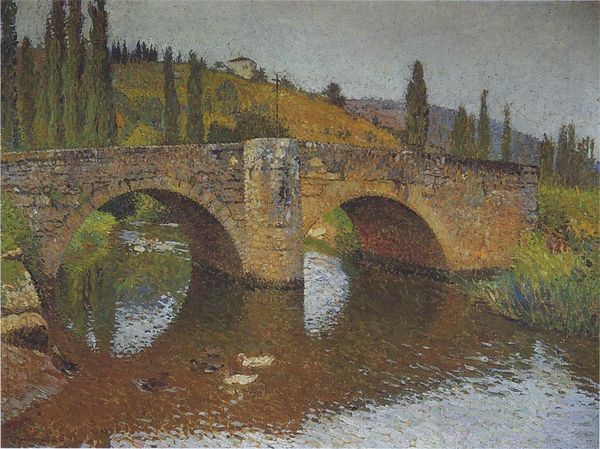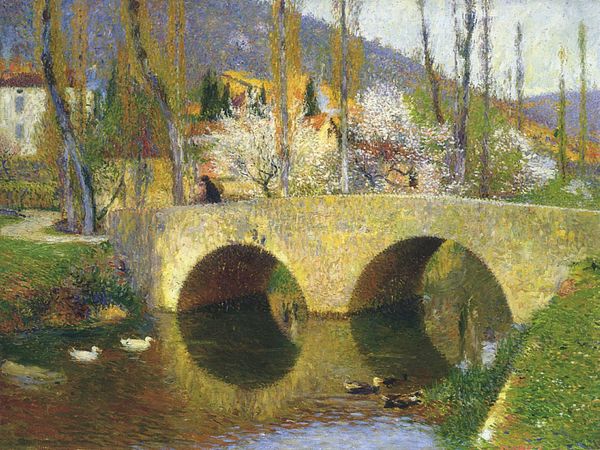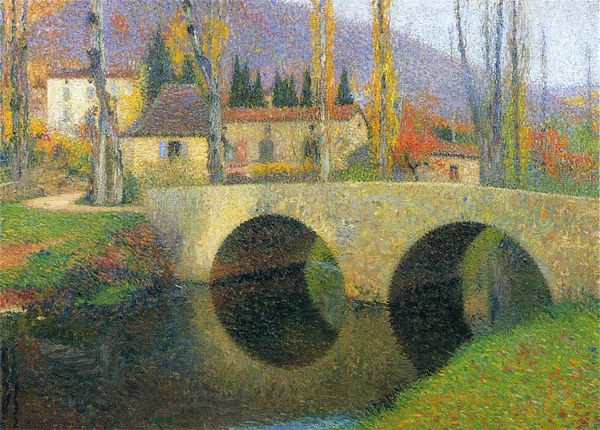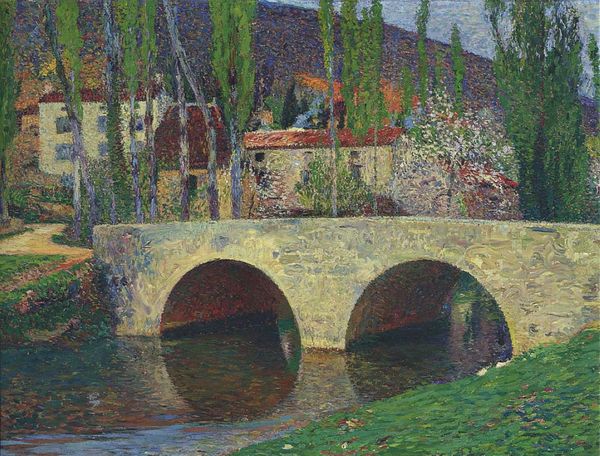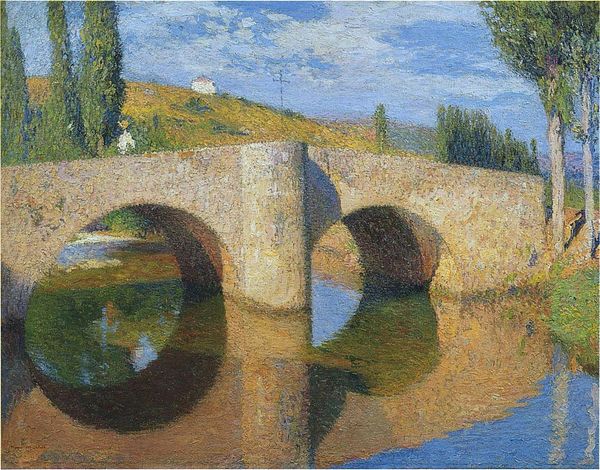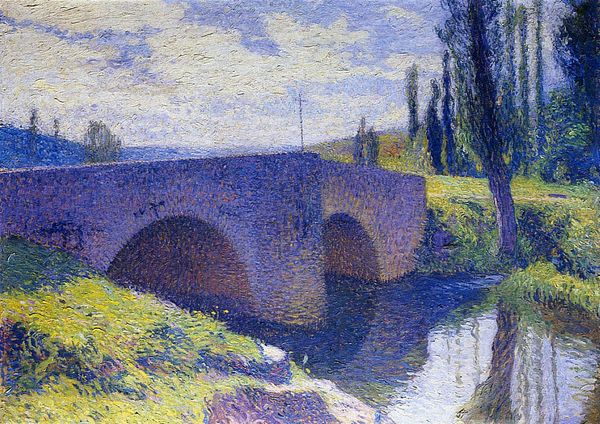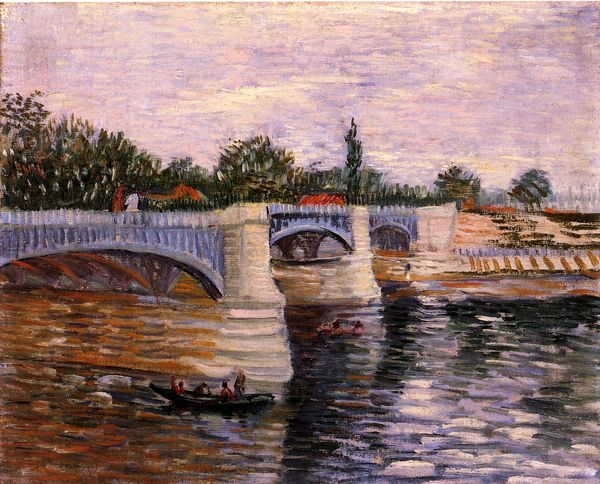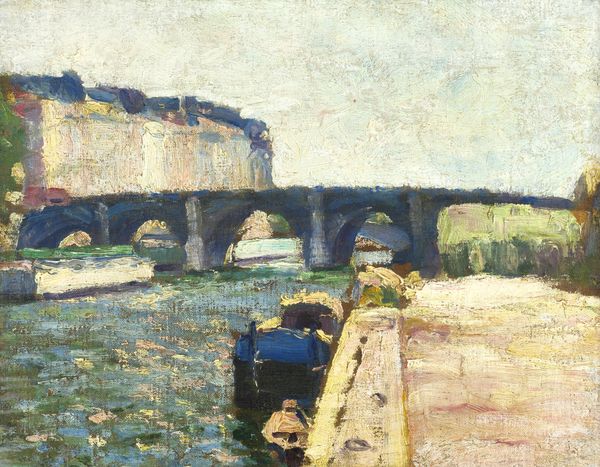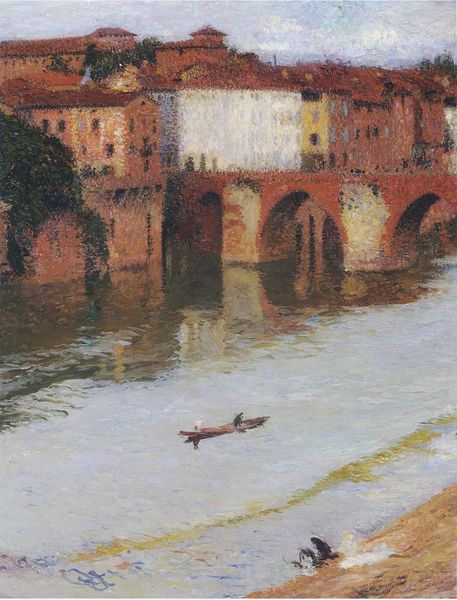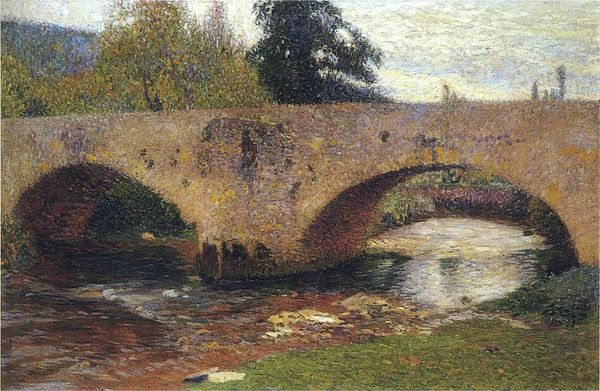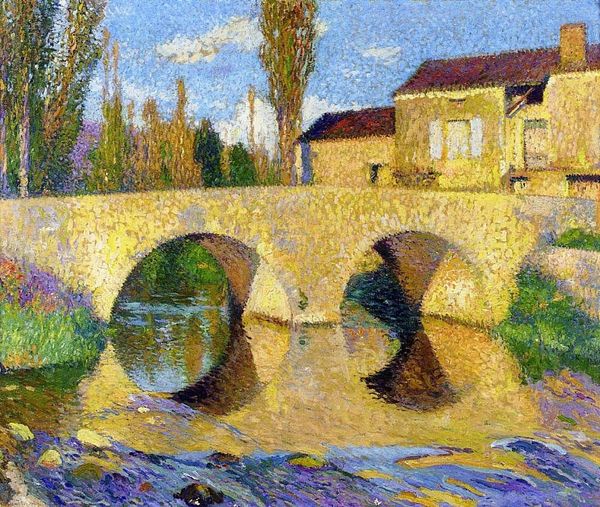
painting, oil-paint
#
painting
#
impressionism
#
oil-paint
#
landscape
#
river
#
figuration
#
oil painting
#
water
Copyright: Public domain
Curator: We're now looking at an oil painting titled "Woman Washing Clothes in River" by Henri Martin. Editor: The dappled sunlight and soft brushstrokes give it such a tranquil feel. The heavy bridge dominates the view, with the human presence almost an afterthought, though pivotal. Curator: Yes, Martin’s technique, heavily influenced by Impressionism, uses broken color to render light and atmosphere. Note the application of small, distinct strokes of paint that create a shimmering effect. The overall structure emphasizes a certain balance between architectural mass and natural fluidity. Editor: It's fascinating how the mundane act of laundry is framed within a larger social and environmental context. Washing clothes in a river wasn’t just a chore, but a public act, a social space for women in many communities. Is it fair to ask whose labor and life this painting implicitly touches upon? Curator: A valid point. The artwork prompts a focus on color harmony; see how the warm tones of the bridge and buildings are echoed in the water and balanced by the cooler blues and greens. There's a clear formal relationship between all the elements. Editor: But to disregard the lived reality behind that "color harmony" risks romanticizing a difficult existence. Martin perhaps overlooks—or consciously ignores—the socioeconomic factors at play. What choices led the artist to portray it this way? Curator: Possibly, but one might also observe the rhythmic brushwork as a visual metaphor for the cyclical nature of labor and the passage of time, as if attempting to bridge that class disparity, literally through formal design. Editor: Ultimately, "Woman Washing Clothes in River" operates on multiple layers. Its visual appeal shouldn’t overshadow its capacity to provoke inquiry and discussion about its wider societal context. Curator: Precisely, analyzing how the composition creates and frames that effect—of labor meeting idyllic landscape—reveals its aesthetic and conceptual potency. Editor: Indeed, by understanding its historical nuances, we enrich our interpretation and allow this image to speak volumes beyond mere pictorial charm.
Comments
No comments
Be the first to comment and join the conversation on the ultimate creative platform.


